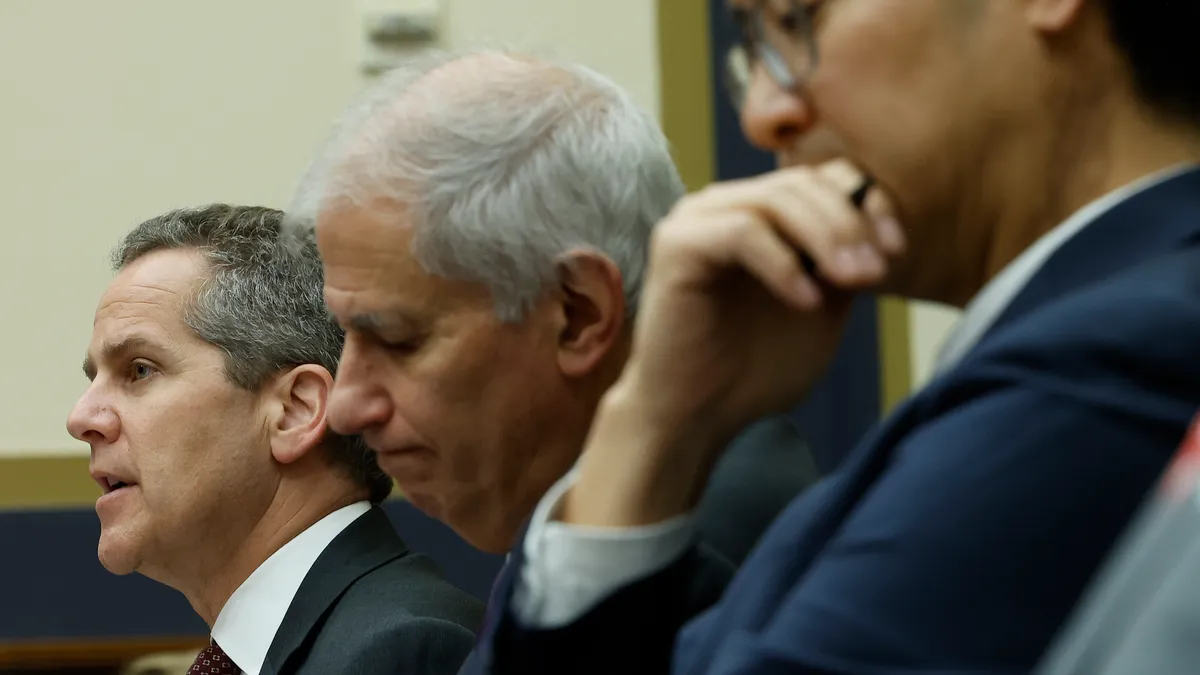Royal Bank of Canada launched an executive shake-up Thursday and split its personal and commercial banking unit in two.
Beyond that, the bank named Neil McLaughlin, the executive who had led the combined personal and commercial unit since 2017, as RBC’s next head of wealth management.
McLaughlin succeeds Doug Guzman, who will stay with the bank as deputy chair.
Further, RBC named Erica Nielsen, now the executive vice president of personal financing products for the bank’s U.S. and Caribbean operations, to lead the newly standalone personal banking unit.
The bank also appointed Sean Amato-Gauci, a 29-year RBC veteran and head of business financial services, as chief of the commercial banking unit. And it named Jennifer Publicover as its next head of insurance.
All of the personnel moves take effect Sept. 1.
"I'm personally energized by the opportunity to work with these extraordinary leaders in the coming years as they take on new roles and responsibilities on our Group Executive leadership team," RBC CEO Dave McKay said in a statement Thursday.
That McKay sees himself at the bank “in the coming years” stands as an indicator that the CEO, who has served in the bank’s top role since 2014, has no intention of leaving any time soon.
“The moves, to me, imply that the clock is ticking but that a change is not imminent,” Jefferies analyst John Aiken told Bloomberg on Thursday.
The shake-up appears to position McLaughlin, in particular, as a strong contender to succeed McKay whenever that time comes, analysts said.
“Neil ran the Canadian operations, he’s now heading up the wealth management operations, which is essentially their US platform, and it definitely bolsters his resume,” Aiken told the wire service.
For one, the change gives McLaughlin some oversight of RBC’s much-maligned City National unit, which needed a nearly $3 billion cash infusion from the parent bank last year, then took a $65 million penalty from the U.S. Office of the Comptroller of the Currency in January.
But McLaughlin isn’t the only potential successor.
Retaining Guzman as deputy chair “shows how much [RBC] respect[s] his experience, his wisdom, and they obviously did not want to lose him,” Aiken said.
Indeed, McKay, in his statement Thursday, said the bank is “indebted to Doug” for his leadership in wealth management since 2015.
Aiken also noted that Derek Neldner, who leads RBC’s capital markets division, should be considered a potential CEO candidate.
The executive moves come roughly six months after regulators approved RBC’s acquisition of HSBC’s Canadian retail presence. Analysts estimate that, at the very least, McKay can be expected to stay in RBC’s top role until HSBC’s footprint is integrated.
One executive role that was not mentioned among Thursday’s shake-up is CFO. RBC fired its last CFO, Nadine Ahn, in April over an undisclosed personal relationship, and named Katherine Gibson as the bank’s interim finance chief.
“While we believe that the changes highlight RBC’s bench strength, we are surprised that there was no resolution on the bank’s CFO position in conjunction with the announcements with Katherine Gibson still retaining the ‘interim’ tag,” Aiken said in a note seen by The Globe and Mail.
Thursday’s moves expand — to five — the number of business segments RBC will claim for financial reporting purposes: personal banking, commercial banking, wealth management, insurance and capital markets.
Five seems to be a magic number of sorts for other similarly sized banks undergoing restructuring. Citi last September scrapped a two-division structure, opting instead to have five unit chiefs report directly to CEO Jane Fraser. Santander, too, last year stretched the number of primary reporting units at the bank to five. (Truist, an outlier here, reduced its number of division heads from seven to three.)
Edith Galinaitis, an RBC spokesperson, told Bloomberg the bank is “taking the opportunity to review our structure and talent to simplify the way we work, better position us to take advantage of our scale, speed up decision making and elevate our leaders to deliver on strategic growth priorities with clients at the center.”











